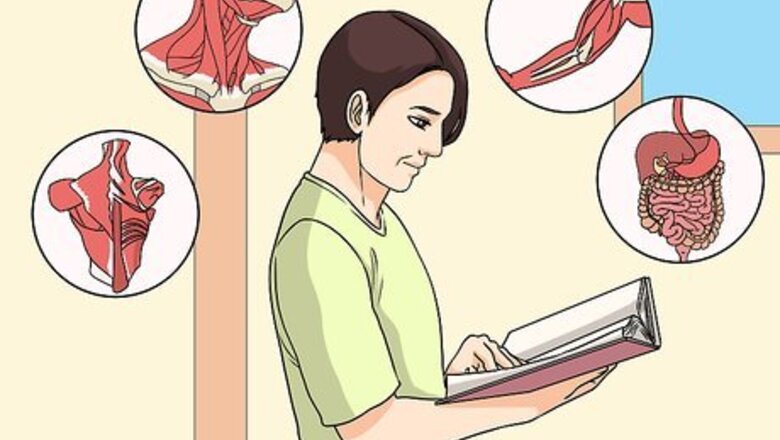
views
X
Research source
However, it will be a lot more manageable if you break the task into chunks. In addition, learning the root words that make up the muscle names can give you valuable clues to remembering where each muscle is located. Finally, you can use studying devices like flashcards, quizzes, games, and even songs to help you recall the muscles for an exam!
Creating a Learning Strategy
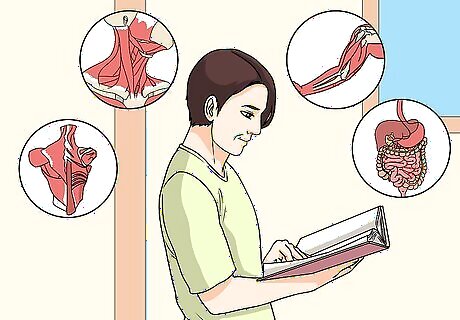
Break the body into different sections. Learning all of the muscles in the body at once can be really overwhelming. Instead, focus on learning the muscles in one area of the body at a time. For instance, you might break the body into sections like: Neck Back Shoulders, arms, wrists, and hands Abdomen Hips, legs, knees, and feet
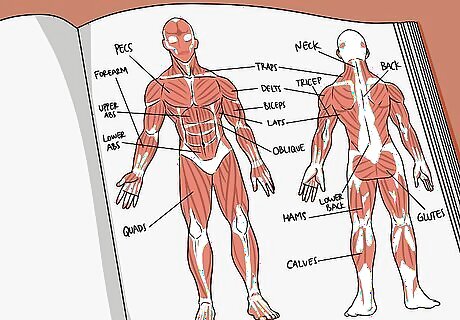
Look at the name of the muscle for clues. At first glance, the Greek- and Latin-derived names of muscles can seem incomprehensible. However, if you take a little time to learn a few root words, those Latin names can give you valuable insights into things like the muscle's size and shape, its location, and even its function. For example, the name of the quadratus lumborum muscle tells you that the muscle is square-shaped ("quad") and located in the lumbar region "lumborum," so you know that this is a square muscle in the lower back. Try printing out a list of anatomical root words to use as a reference, like the one found here: http://manoa.hawaii.edu/undergrad/learning/wp-content/uploads/2014/03/Word-Roots.pdf.
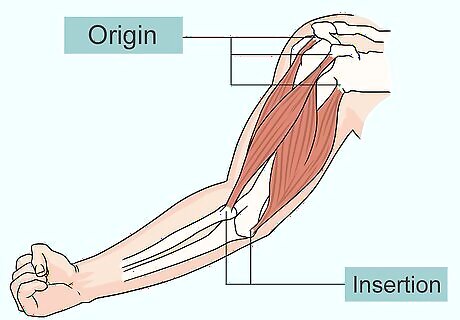
Study the insertion and origin points of each muscle. A muscle is attached to your skeletal system at either end. The end that moves less when the muscle is contracted is typically called the origin, and the end that moves more is called the insertion. Studying where each muscle attaches can help you understand more about its function, and it may be easier to remember its location later on. Some muscles have more than one origin, like the biceps muscle, which has 2, and the triceps, which has 3. However, both of these still have a single insertion point.
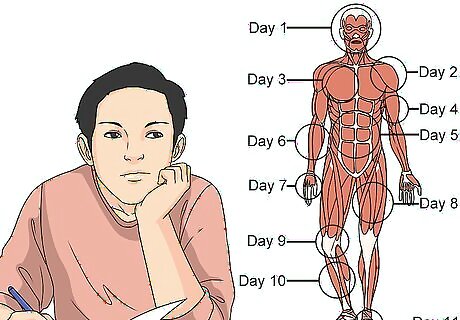
Give yourself plenty of time to learn the muscles. Learning the muscular system is difficult because there's so much information to cover. Don't procrastinate and try to cram at the last minute. Not only will you have a hard time memorizing a huge list of muscle names and locations, but you're not likely to retain much of the information. Instead, spend a little time each day studying the muscle groups, the names of the muscles, their functions, and the insertion and origin points. Remember, it's more important to understand the ways the muscles work than to just memorize their names. This is especially true if you'll need to know this information as part of your career, like if you plan to become a doctor, physical trainer, massage therapist, or athlete.
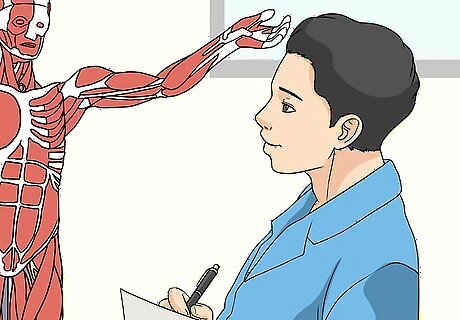
Find study aids that make learning fun. Everyone learns a little differently, so try to find ways to study that helps you feel engaged in what you're learning. That may help you retain the information more effectively, and you won't dread study time as much. For instance, if you learn best by hearing information, you might record yourself reading the names of the muscles, then listen to that as you look at a diagram. If you're more of a hands-on learner, studying anatomical models or even your own muscles might be more helpful. It can help to think about and study muscles from a visual standpoint. Try a quiz like this if you're not sure what your learning style is: http://www.educationplanner.org/students/self-assessments/learning-styles.shtml. Tip: For the best results, use a variety of study materials. That way, you'll be less likely to get thrown off if the format of your exam is different than you're used to!
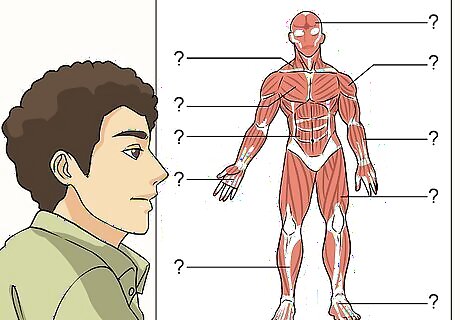
Quiz yourself to test your knowledge. After you've been studying for a while, search online for practice quizzes so you can find out how well you remember what you've learned. Do your best to answer the questions without checking the answers. Then, review your score to see what areas you need to improve in. This can help you narrow down what you need to be studying in order to be successful on your exam. That way, you won't waste time studying something you already have a good understanding of.
Trying Different Studying Techniques
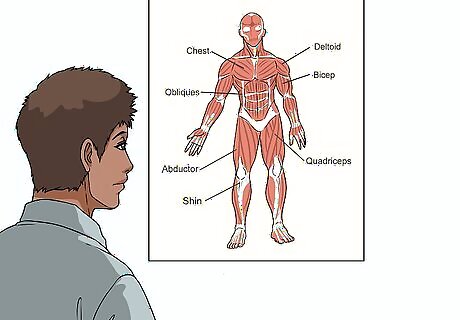
Label a diagram if you're a visual learner. If you learn best by reading and re-reading, or by looking at diagrams, use print-outs of the muscular system to help you study. Read over the labeled diagram carefully, then switch to a blank copy of the same diagram and try to fill in the names of as many muscles as you can remember. Keep doing this until you learn the muscles in each part of the body. If you're artistic, drawing the muscles may help you learn the information even more quickly.
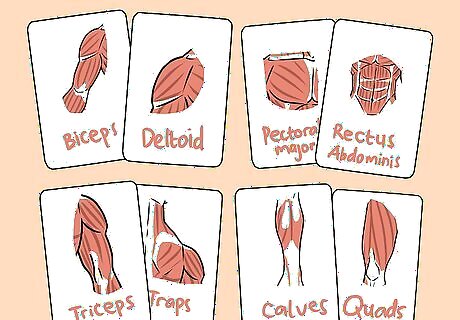
Make flashcards to memorize the location and function of each muscle. One one side of an index card, write the full name of the muscle. On the opposite side, write what the muscle does and where it's located, including its insertion and origin points. If there's any other helpful information, like a nickname, write it on this side as well. Be sure to study both sides of the flashcards! That way, you'll be able to recall the information about the muscle from just the name, but you'll also be able to name the muscle based on its location and function. Divide your flashcards into muscle groups so you don't have as many to deal with at once.
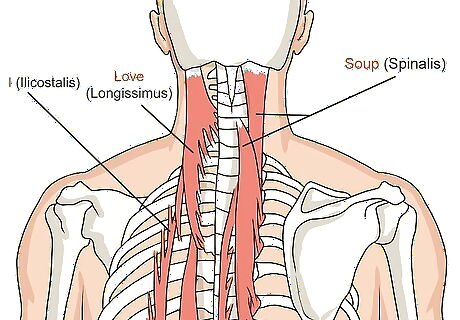
Use mnemonic devices to remember muscle groups. A mnemonic device is a way to remember the first letter of each item in a group. When you're studying muscle groups, this can be a helpful way to remember how many muscles are in each group, as well as the name of each. For example, if you're studying the muscles that make up the erector spinae muscle group, you might use the mnemonic "I Love Soup," which would stand for illiocostalis, longissimus, and spinalis. Tip: Using mnemonic devices can be very helpful for short-term memorization, but it may not be as useful for long-term learning.
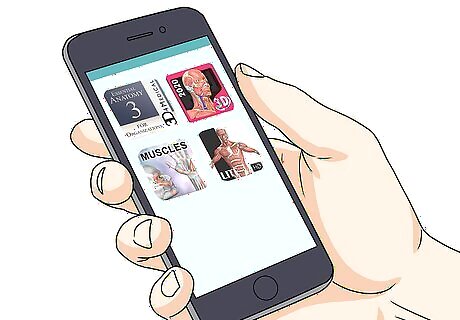
Download an app or game to study digitally. Instead of flipping through endless sheets of diagrams featuring each individual muscle group, try using an app or a game, instead. There are a variety of apps out there that will allow you to learn the muscles in an interactive and fun way. Some popular free apps include: Essential Anatomy Anatomy Learning - 3D Atlas Learn Muscles: Anatomy Visual Anatomy Lite
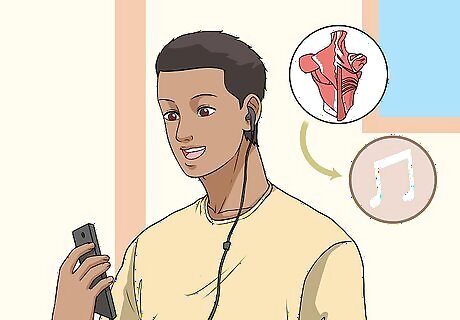
Learn songs for a fun way to study. Search online for songs or videos about the muscles in individual areas of the body. This can be a catchy way to help you remember the names of muscles, especially if there's an area that you're struggling with. For example, although it doesn't name every single muscle, this song covers most of the major muscles in your body: https://www.youtube.com/watch?v=hY2fa6Q98-k.
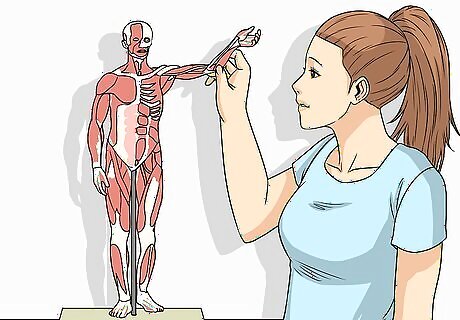
Study a model or your body for hands-on learning. If you have a model skeleton with the muscles included, or with the insertion and origin points labeled, studying that may be a helpful way to remember the muscles. However, even if you don't have one, you can locate each muscle on your body (or someone else's) to help you visualize exactly where it is. If you're studying on a real person, try drawing the outline of each muscle with a washable marker!




















Comments
0 comment